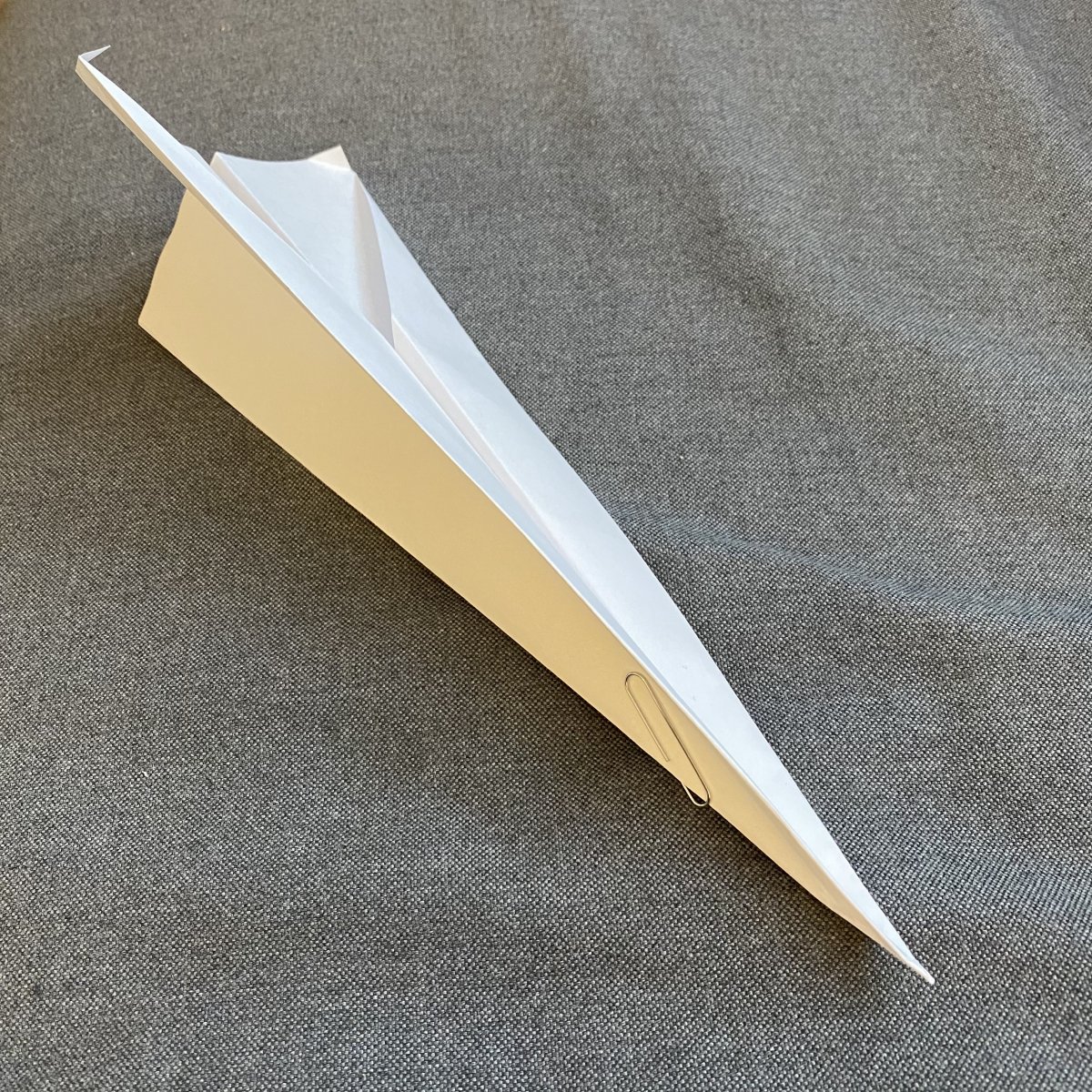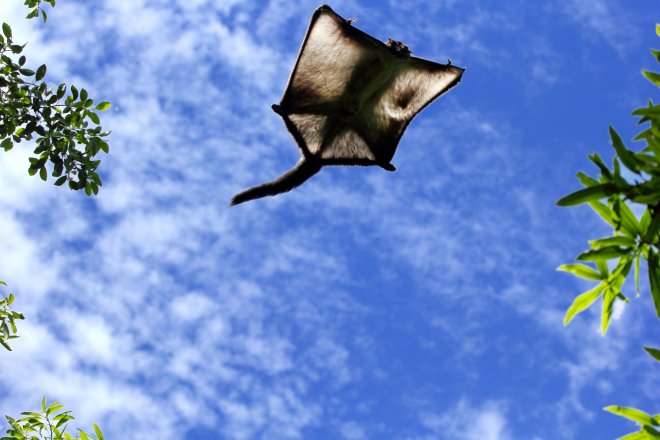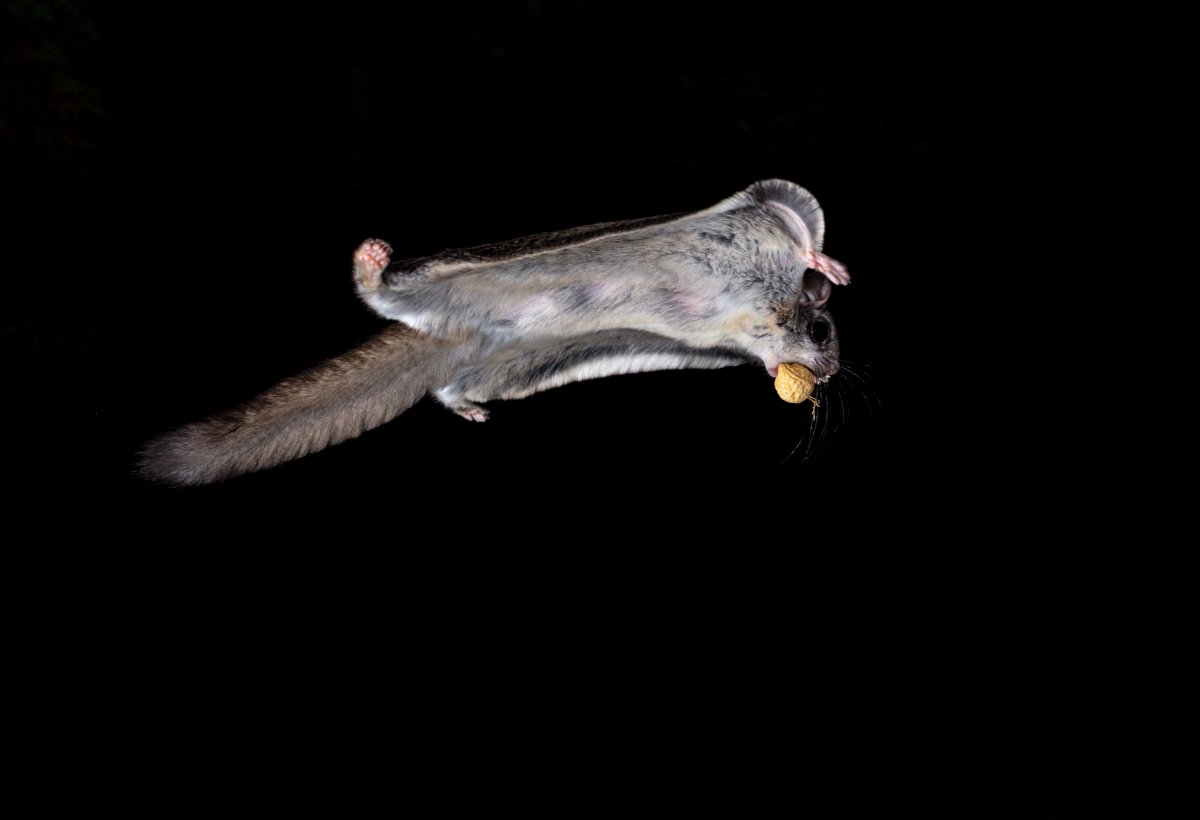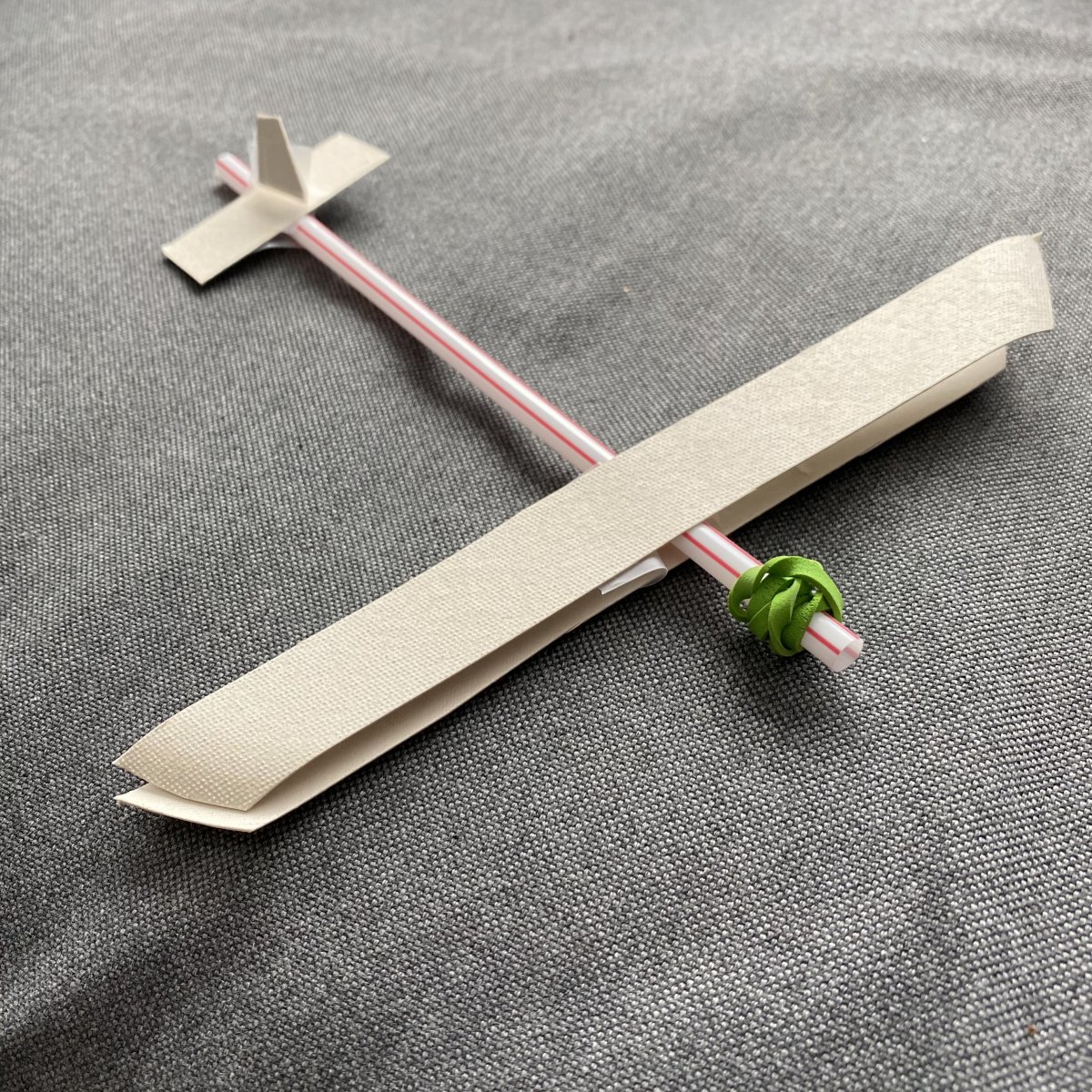How Can We Glide Like a Squirrel?
How Can We Glide Like a Squirrel?
Your Challenge
In this activity, you will learn about the flying squirrel and how this animal is able to glide through the air. You will then design your own model of the flying squirrel and learn how certain parts of their body help them glide.
Downloads

You will need:
- A smartphone, computer, or tablet to access the internet.
- Paper or notebook
- Pen or pencil
Steps:
1. Read the information provided in the Flying Squirrels blog post.
2. Think about what you have now learned about gliding.
a. What body parts allow the flying squirrel to glide? Write a list of these body parts.
b. What features did the Wright brothers use in their steerable glider? Some features could include the shape of the wings, a rudder, the material something is made from, or a type of weight used for stability. Write a list of these features.
c. Think about the features you wrote down in Step 2b. How are each of these features similar to or different than the flying squirrel’s body parts that you wrote down in Step 2a? Write down your ideas for each feature.
You will need:
- A smartphone, computer, or tablet to access the internet.
- Paper or notebook
- Pen or pencil
Steps:
1. Investigate different types of paper airplanes and gliders. Refer to the images in this activity, the information in the flying squirrel blog post, or check out the National Air and Space Museum’s websites (http://howthingsfly.si.edu/ and https://airandspace.si.edu/learn/highlighted-topics-/flight).
a. What are the different features of the gliders and paper airplanes? Some features could include the shape of the wings, how big they are, or the material they are made from. Write down a list of features for each glider that you investigated.
2. What is gliding? Gliding is when an object or animal soars through the air after an initial thrust. The animal or object then uses air resistance to slow down and land at its target destination.
a. Think back to the features you wrote down in Step 1a.
i. How do each of these features help the gliders or paper airplanes glide? Write down your ideas for each feature.
3. Think about the different features of the paper airplanes and gliders that you wrote down in Step 1a.
a. How are these features similar to or different than the flying squirrel’s body parts that allow them to glide? Write down your ideas for each feature.



You will need:
- Paper or notebook
- Pen or pencil
Steps:
1. Decide on how you would like to build a glider model based on the research that you did and what you learned about how flying squirrels glide.
a. Think back to the list of features that you wrote down about the flying squirrel in Part 1.
i. What features will you include in your design? Think about the shape of the wings, if your design will have a rudder, and what material it will be made from. Write down a list of these features.
b. How are these features similar to or different than those used by the flying squirrel? Write down your ideas for each feature.
Take It Further
If you want to learn more about flying and gliding, check out this Smithsonian resource.
This webpage provides more information about how different objects fly and glide in the air or orbit in space.

You will need:
- Paper or other material needed for chosen design
- Depending on chosen design: Scissors, paperclips, tape, rubber bands, straws, toothpicks, paper or Styrofoam plate
Ask an adult for help if you need assistance folding the paper, using scissors, or taping!
Steps:
1. Build your glider design. Make sure to incorporate the features that you wrote down in Part 3.

You will need:
- Your glider model
- Ruler or tape measure
- Stopwatch
- Paper or notebook
- Pen or pencil
Ask an adult for help using the stopwatch or tape measure if you need assistance!

Steps:
1. Test your glider by throwing it into the air and observing how it flies.
a. Using a ruler or tape measure, write down how far the glider traveled.
b. Using a stopwatch, write down how long the glider was in the air.
2. What did you observe about how your glider flew? Write down your observations.
a. Did your glider fly straight? Did it curve upward or downward?
b. Did your glider stay in the air or did it fall quickly? Does it need more lift?
c. Did your glider travel very far? Do you need to give it more thrust?
Flight Forces
Lift is how your paper glider stays in flight. This is a force that pushes upward on the wings of your glider or on the patagium of the flying squirrel to keep them in the air. Thrust is a force that moves something forward into gliding. You apply thrust when you throw your glider. The flying squirrel gives itself thrust when it jumps from a tree.
You will need:
- Additional paper or different type of paper (e.g., construction paper, newspaper)
- Additional materials or different type of materials (e.g., Styrofoam, construction paper, newspaper)
- Depending on chosen design: Scissors, paperclips, tape
- Paper or notebook
- Pen or pencil
Steps:

1. Decide how you would like to change your design.
a. What new features are you going to add to your design? Write them down.
b. How do these features help your design glide? Write down your ideas for each feature.
c. How are these features similar to or different than the flying squirrel’s body parts? Write down your ideas for each feature.
2. Make one change at a time and write down this change in your notebook.
3. Test your glider after making a change by throwing it into the air again.
a. Using a ruler or tape measure, write down how far the glider traveled.
b. Using a stopwatch, write down how long the glider was in the air.
4. Compare the numbers you wrote down for your new design to the numbers you wrote down for your first design.
a. How did the numbers change?
b. What new changes would you make to your design?
5. Repeat Steps 1-4 for each change you make to your design.
Take It Further
Want to see what it would look like if you could glide? Check out this Smithsonian resource. Glider Guide This web application is a simulation where you can glide above different landscapes. What do you see when you are gliding in the different locations? What do you think the flying squirrel sees when it glides?
Air resistance A force that pushes against an animal or object moving through the air.
Gliding When an animal or glider moves through the air after thrusting forward.
Lift The force acting on an animal or airplane wing that keeps the object in the air.
Patagium Flying squirrels’ special skin that allows them to glide through the air.
Thrust A type of push that causes animals or airplanes to get off the ground and sustain flight.



